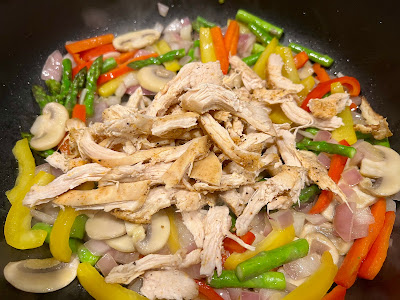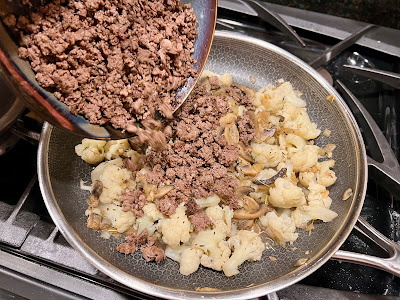Experimenting with eggplant is always fun. After catching a glimpse of a Tik-Tok video I tried my hand at making something different. I'm calling these Eggplant Parmesan Cakes because the method creates individual servings that look more like a layer cake than a traditional tray of eggplant parmesan. Enjoy!
Ingredients:
- 2 medium eggplant - cut into 12 slices total lengthwise
- 3/4 lb lean ground beef
- olive oil as needed
- 1 yellow onion - chopped
- 2 cloves garlic - minced and left alone for 10-15 min before cooking for best flavor
- 2 medium tomatoes - diced
- garlic powder, oregano, salt & pepper, fresh chopped basil to taste for filling
- enough shredded mozzarella to make you smile
Preparation:After washing/drying the eggplant, remove the top and then make ~3/8" slices lengthwise. Best cutting is done by standing the eggplant on the cut surface where top was removed and slicing downward while watching your knife from the top.
After slicing the eggplant,
sprinkle with coarse salt and let the slices sit for 10-15 minutes. This helps
release excess moisture from the eggplant. I do this right on my cleaned countertop because 12 slices take up a lot of room. Use paper towels to pat the eggplant dry, wiping off any extra salt as well.
Preheat the oven to 350F and lightly brush slices with olive oil. Arrange the eggplant slices on sheet pans brushed with olive oil. Bake for ~15-20 minutes until lightly browned but still firm. While eggplant is baking, make the filling.
Fry the ground beef in a tbsp of olive oil and set aside.
In the same skillet add another tbsp olive oil and saute onion & garlic.
Add tomatoes and simmer until until cooked down and slightly thickened.
Season to your liking and then add ground beef back. Blend well and keep warm.
Assembly: The size of your original eggplant will determine how many "cakes" you make. Ideally you will need four slices per cake. Place bottom layers in a sheet pan and add filling.
Next slice gets filling and a layer of cheese. Third layer just filling and final fourth layer just cheese.
Bake at 350F for about 15 min until top cheese is melted and golden brown. If needed, switch to broil for a couple minutes to get the desired color.
Garnish with fresh Italian parsley and add grated parmesan if you like.
Blessed be... and happy cooking!
























































